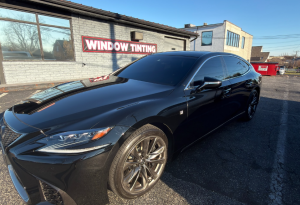When it comes to automotive window tinting, one of the most common questions is: How long does it last? The lifespan of window tinting on vehicles can vary significantly based on several factors. In this guide, we’ll explore these factors and provide tips on how to maximize the longevity of your window tint.
Factors Influencing Window Tint Lifespan
The durability of window tinting is influenced by several key factors. Understanding these can help you make informed decisions and ensure the longest possible life for your tint.
Quality of the Tint Material
The type of window film used plays a crucial role in its longevity. High-quality films like ceramic window tints offer better durability and can last up to ten years, while economical options may only last between one to five years.
Installation Expertise
Proper installation is critical for the longevity of window tint. Professional installation ensures that the film adheres correctly to the glass and reduces the risk of peeling or bubbling, which can shorten the tint’s lifespan.
Exposure to Sun and Heat
Direct sunlight and heat can accelerate the deterioration of window film, especially lower-quality tints. Choosing a high-quality tint and parking in shaded areas can help mitigate this effect.
Maintenance and Care
Regular cleaning and maintenance are essential for extending the life of your window tint. Using the right cleaning products and techniques can prevent damage and keep the tint looking new for longer.
Types of Window Tints and Their Durability
Different types of window films offer varying levels of durability. Here’s a look at some common options:
Hybrid Window Films
Hybrid tints, combining metal particles and dyes, offer a balance between quality and affordability. They typically last longer than purely dyed tints but may not offer the same longevity as higher-end options.
Ceramic Window Tint
Ceramic tints are known for their superior quality and durability. They block UV rays effectively and do not fade over time, making them a long-lasting choice.
Economical Window Tints
Economical tints, often used for DIY projects, have a shorter lifespan and can start to fade or peel within a couple of years. They are less resistant to heat and sun exposure.
Tips for Extending the Life of Your Window Tint
Proper care and maintenance are key to maximizing the lifespan of your window tint. Here are some tips:
Avoid using ammonia-based or abrasive cleaners on tinted windows.
Use gentle soap and water for cleaning, and dry with a microfiber towel or squeegee.
Wait for the recommended time before rolling down newly tinted windows.
Consult with professionals for advice on the best cleaning products and methods.
FAQs:
Q: How long can I expect my window tint to last?
A: The lifespan of window tint varies, with high-quality tints lasting up to ten years and economical options around one to five years.
Q: Does the type of window film affect its durability?
A: Yes, higher-quality films like ceramic tints offer greater durability compared to economical or dyed films.
Q: Can improper installation affect the lifespan of window tint?
A: Absolutely. Poor installation can lead to issues like peeling and bubbling, which shorten the tint’s lifespan.
Q: How can I extend the life of my window tint?
A: Regular maintenance, using the right cleaning products, and professional installation are key to extending the life of your window tint.
Q: Is it worth investing in high-quality window tint?
A: Yes, investing in a high-quality tint like ceramic can offer better durability and protection, making it a worthwhile long-term investment.





